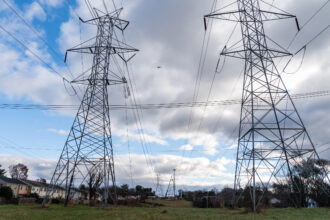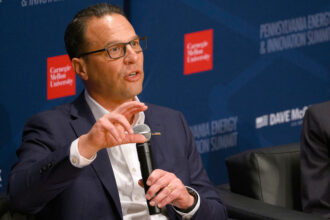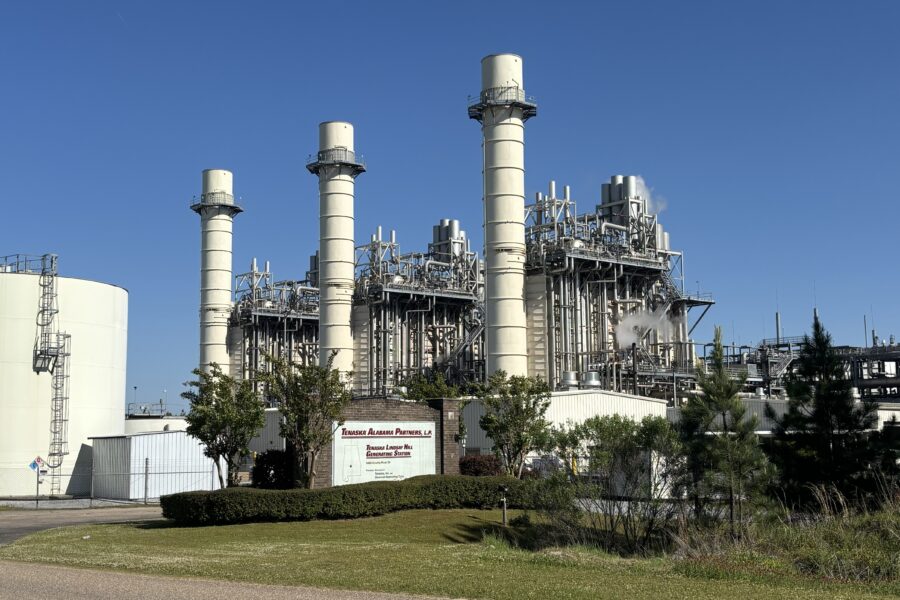After months of wrangling over how to handle surging power demand from AI-driven data centers and the resulting spike in electricity prices for millions, members of PJM Interconnection, the nation’s largest grid operator, could not agree on a solution.
Their disagreement played out last week in an “advisory vote,” part of the final phase of PJM’s expedited rulemaking track known as the Critical Issue Fast Path, or CIFP.
CIFP is aimed at figuring out how PJM can reliably serve the region as data center demand climbs toward a staggering 30 gigawatts by 2030—roughly the power use of 20 million homes. Early stages of that growth have already driven double-digit percentage increases in electricity prices across states, notably in New Jersey, where the state saw a 20 percent bill increase in the summer that became a hot-button issue in its recent gubernatorial race.
The Garden State saw that frustration show up in polling, with a recent statewide survey finding large majorities of voters in both parties saying data centers should shoulder more of the grid costs instead of ordinary households.
Meanwhile, energy projects that could add the needed gigawatts of energy onto the grid wait for years in the PJM interconnection queue.
During the meeting, PJM members—hundreds of representatives, most from the energy industry—reviewed a final slate of a dozen proposals and cast advisory votes on each of them. The options ranged from requiring or nudging data centers to bring their own generation, to creating a new fast track for connecting energy projects to the grid, to temporarily halting new data-center hookups altogether until PJM can reliably serve them.
Any plan that won at least two-thirds approval was deemed endorsed, a non-binding label the PJM Board can point to in making the final decision on a package of rule changes it will file with the Federal Energy Regulatory Commission (FERC).
“PJM’s board are directors of a private company at the end of the day, and they make the decisions by themselves. So an advisory vote is just what it says: It’s providing advice to the board,” said Tom Rutigliano, a senior advocate at the Natural Resources Defense Council (NRDC).
None of the proposals reached the two-thirds threshold.
Rutigliano said the vote “reflected a very divided industry” in a region considered a center of data center development. It also handed PJM’s 10-member board of managers virtually a blank slate to craft a policy of their own or pick among the proposals. PJM Interconnection operates a competitive market for wholesale electricity in all or parts of Delaware, Illinois, Indiana, Kentucky, Maryland, Michigan, New Jersey, North Carolina, Ohio, Pennsylvania, Tennessee, Virginia, West Virginia and the District of Columbia.
“The options open to them (the Board) are they can pick one of these or they could cobble together some sort of Frankenstein version and pick and choose different parts of the proposals. Or come up with their own,” said Nick Guidi, a senior attorney at the Virginia-based Southern Environmental Law Center (SELC), a nonprofit, nonpartisan environmental legal advocacy group.
Mark C. Christie, a recent chairman at FERC, characterized PJM members as representative mostly of the interests of an energy industry that gets to “decide which rules they want to live under” rather than average bill-paying consumers.
“[I]t is really just an insiders’ game and always has been. Consumers, especially residential, have no serious representation or influence in this ‘inclusive’ process,” Christie wrote on LinkedIn.
Tougher proposals could cap the revenue of many energy companies and could push more risk onto them instead of ratepayers.
PJM has not responded to a request for comment.
This story is funded by readers like you.
Our nonprofit newsroom provides award-winning climate coverage free of charge and advertising. We rely on donations from readers like you to keep going. Please donate now to support our work.
Donate NowIndependent energy market monitor Joseph Bowring has put forward a notably strict but straightforward idea: Data centers shouldn’t be allowed to build until PJM can guarantee reliable power for them.
“I’m quite sure the data centers do not want to be added quickly and unreliably,” said Bowring, the president of Monitoring Analytics, an independent monitoring unit that reports on PJM’s electric power market.
Another notable proposal came from a coalition of governors from Pennsylvania, Maryland, New Jersey and Virginia, joined by the Data Center Coalition (DCC), whose members include tech giants such as Google, Microsoft and Amazon. They urge states to entice data centers to supply their own power in exchange for priority in permitting and siting—the main bottlenecks for these projects.
A recent proposal from bipartisan lawmakers across the PJM region nodded to the DCC governors proposal but included a policy that in times when power would be spread thin, like during a heatwave or a hurricane, data centers would have to forego power unless they brought their own generators into the system to increase reliability for everyone. When their power is cut, data centers usually fire up diesel backup generators that pollute the air in nearby neighborhoods.
In all these proposals, powering data centers would need rapid development of energy generators, most likely natural gas plants, according to energy experts. But Julia Kortrey, a deputy director of state policy at Evergreen Action, a climate advocacy group, urged PJM members to look at Texas as a model for swift deployment of renewables.
“We should be getting as much energy as we possibly can right now, and that would still include renewables,” said Kortrey.
The PJM board is expected to spell out the details of its own solution in December. It seeks to sign off a package of rule changes to file with FERC before the end of the year. FERC will then decide whether the proposal is just, reasonable and not unduly discriminatory under federal law.
About This Story
Perhaps you noticed: This story, like all the news we publish, is free to read. That’s because Inside Climate News is a 501c3 nonprofit organization. We do not charge a subscription fee, lock our news behind a paywall, or clutter our website with ads. We make our news on climate and the environment freely available to you and anyone who wants it.
That’s not all. We also share our news for free with scores of other media organizations around the country. Many of them can’t afford to do environmental journalism of their own. We’ve built bureaus from coast to coast to report local stories, collaborate with local newsrooms and co-publish articles so that this vital work is shared as widely as possible.
Two of us launched ICN in 2007. Six years later we earned a Pulitzer Prize for National Reporting, and now we run the oldest and largest dedicated climate newsroom in the nation. We tell the story in all its complexity. We hold polluters accountable. We expose environmental injustice. We debunk misinformation. We scrutinize solutions and inspire action.
Donations from readers like you fund every aspect of what we do. If you don’t already, will you support our ongoing work, our reporting on the biggest crisis facing our planet, and help us reach even more readers in more places?
Please take a moment to make a tax-deductible donation. Every one of them makes a difference.
Thank you,













